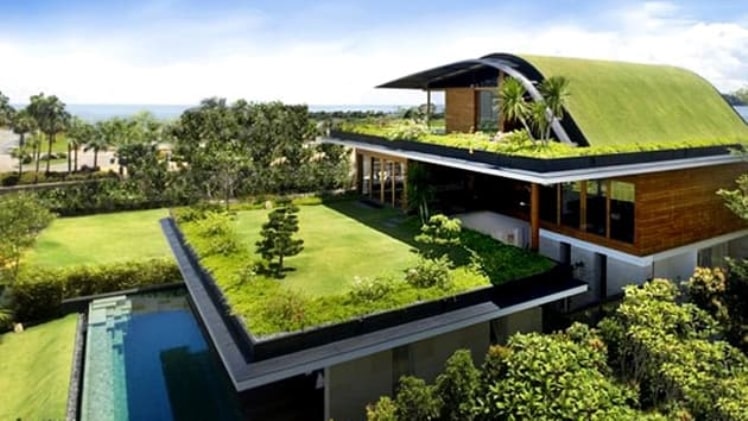Best Affordable Housing Schemes in India: Check Benefits and Eligibility

Everyone aspires to own their own home, where they wish to spend most of their time making countless memories. But considering the exorbitant prices of housing properties and the complexities of purchasing a house, it is difficult for everyone to realize this desire. House loan schemes assist homebuyers but come with stringent qualifying requirements and expensive borrowing fees.
Hence, over the years, the Central Government and the State Governments have worked together to implement several affordable housing initiatives. The objective of these initiatives is to fulfill the “Housing for All by 2022” mission. Such housing policies have made it easier for people to apply for home loan schemes and offer interest rate subsidies on housing loans for purchasing or building a home with basic amenities.
6 Best Housing Schemes in India:
Several government housing schemes are available today that streamline the home buying process for buyers while also making homes more affordable. Below are some of the best affordable government housing schemes.
1) Pradhan Mantri Awaz Yojana (PMAY) (Urban):
PMAY urban seeks to solve the scarcity of urban housing among EWS/LIG and MIG categories, including slum dwellers, by guaranteeing a pucca house to all qualified urban households. The categories under. PMAY urban includes the economically weaker section (EWS), middle-income group (MIG), and lower-income group (LIG).
PMAY urban has made it necessary for the female head of the family to be the owner or co-owner of the house. In addition, PMAY (U) mandates that the female head of the household be the sole or joint owner of the home.
Under PMAY urban, people in EWS (with household income up to INR 3 lakhs) and LIG (with household income between INR 3 lakhs and INR 6 lakhs) categories can apply for housing loan schemes up to a maximum amount of INR 6 lakhs. Likewise, the middle-income group – I (with household income between INR 6 lakhs and INR 12 lakhs) and middle-income group – II (with household income between INR 12 lakhs and INR 18 lakhs) can apply for a loan up to a maximum of INR 9 lakhs and INR 12 lakhs, respectively.
2) Pradhan Mantri Awaz Yojana (PMAY) (Urban):
PMAY has also launched rural housing schemes for people living in rural areas. The scheme offers a 3% discount on interest rates for housing loans up to INR 2 lakh. This scheme applies to new construction in rural areas or for remodeling existing homes.
This program should not be used by families having solid homes. The members of the beneficiary’s family should comprise only the spouse and/or unmarried children. Benefits of this program are available to Scheduled Tribe (ST), Scheduled Cast (SC), free bonded laborers, and BPL non-SC or ST individuals.
3) Delhi Development Authority (DDA) Housing Scheme
DDA unveiled a new housing program in 2018, which provides houses to high-, middle-, and low-income groups. In addition, families from the economically disadvantaged portion are also given special accommodations by DDA Housing.
Following are the program’s eligibility requirements:
- The beneficiary needs to be at least 18 years old.
- Beneficiaries of this scheme include EWS, SC/ST, war widows, disabled people, and veterans.
- If both husband and wife are applying and are selected as winners, only one of them can be the beneficiary.
- The beneficiary/dependents must not own a home larger than 67 sq.m in the cities of Delhi, Delhi Cantonment, or New Delhi.
4) Tamil Nadu Housing Board Schemes:
The Chennai City Improvement Trust, formerly known as the Tamil Nadu Housing Board Scheme, began operations in 1961. The scheme intends to offer economical housing to low-income groups who are migrating to metropolitan areas for a higher quality of life and employment opportunities.
To be qualified for this program, one must meet the following requirements; the beneficiary must be a Tamil Nadu native and at least 21 years old, and a salaried person who has never owned a home under any other housing programs.
5) Rajiv Gandhi Awas Yojana Housing Scheme:
The scheme was launched in 2009 by the Ministry of Housing and Urban Property Alleviation (MHUPA). The scheme’s objective is to eradicate slums from India and formally regulate unlawful structures to raise the level of living.
The plan uses two-stage execution strategies to eliminate the slums from cities and have projects ready for slum development. Financial assistance of INR 75,000 is given to EWS for dwelling units between 21 sq.m and 40 sq.m. This program provides financial assistance to the States, Union Territories, Central Government organizations, and Urban Local Bodies.
6) Maharashtra Housing and Area Development Authority Lottery Scheme:
To increase accessibility to residential properties, MHADA launched a lottery scheme. The qualifying requirements for this program are based on an individual’s income as well as the other factors listed below.
- The beneficiary must be a Maharashtrian, older than 18 years old, an employee, and have a PAN card.
- To apply for LIG (lower-income group) flats, the beneficiary’s monthly income should be between INR 25,001 and INR 50,000. The monthly income criterion for MIG (middle-income group) flats is between INR. 50,001 and INR 75,000. Finally, for HIG (higher-income group) flats, the beneficiary must earn more than INR 75,000.
Key Takeaway:
Property acquisition is now easier thanks to increasing housing initiatives and programs that assist people in purchasing a property with discounts on mortgage loans or lowering mortgage interest rates.
So, deciding on a reliable house loan company, look for companies that offer affordable home loans and better if they have an instant home loan scheme. In addition, the company should offer lower interest rates and simple repayment alternatives. Hence, compare the government housing schemes, and select the one that best satisfies your needs.




